MEMO/02/94
Brussels, 15 May 2002
Questions & Answers � US Farm Bill
What is the US Farm Bill?
The "Farm Security and Rural Investment Act of 2002" replaces the "FAIR Act of 1996" and sets out various agricultural programmes under 10 titles, notably the commodity (farm subsidy) programmes, conservation and trade. It will last for 6 years.
What will it cost?
The projected spending on commodities is projected to be in the order of $15�20 billion per year for crops alone, which represents a 70% increase (some calculations put the spending higher at an 80% increase) on the amount foreseen at the end of the FAIR Act. The overall Farm Bill budget has been calculated in the US on a 10-year basis at $180 billion. As the Farm Bill will have a price-depressing effect on world markets, and in the absence of a dramatic increase in demand, the cost is likely to be in the higher range of the estimates.
Do we know the full implications of the Farm Bill?
The US Farm Bill is a staggeringly complex piece of legislation and as yet (mid-May) not even the leading US farm policy analysts have worked out the full economic and trade effects, including its repercussions for international trade and prices. In particular, as the main thrust of the subsidy regime is "counter-cyclical", it has the effect of cancelling out market signals. This means that farmers will continue to over-produce in times of surplus.
While analyses continue, it is already evident from world-wide reaction to the Farm Bill, that the US, in choosing to aid farmers in a highly production-distorting way, has lost any claim to be a credible force for farm policy reform in the WTO agriculture negotiations. In addition, by subsidising its farmers to the maximum level of its current ceilings under WTO, the US restricts its ability to accept further reductions in production-distorting support in the frame of the WTO agriculture negotiations.
What crop subsidy measures are proposed in the Farm Bill?
In the crop sector, three types of subsidy payments are proposed:
1. Fixed decoupled payments. This subsidy is set for each eligible crop grown in a reference period. The farmer receives a set payment each year. To an extent, this payment is a continuation of the existing "AMTA payments", introduced under the FAIR Act. However, in a reversal of AMTA policy, the new subsidy remains constant (AMTA decreased over time), and rates are even set higher than the current AMTA rates. Payments are extended to soya beans and minor oilseeds.
2. Loan payments are made under the "loan rate" programme; most are paid as "loan deficiency payments" or LDPs. While there are various mechanisms, in essence, farmers are paid the difference between a fixed price (the "loan rate", which varies by region) and a local "market" price (in fact a price estimated by the US administration for each county where crops are produced). If, when the farmer claims the LDP (which he can do after selling the crop), this market price is below the loan rate, the difference is made up with a direct subsidy. LDPs are "counter-cyclical" in nature, since more is paid when prices are low, and vice verse. The LDP programme is extended for the first time to pulse crops (chickpeas, dry peas and lentils). Otherwise the Farm Bill boosts payments under the current FAIR Act programme by an average of about 5% (ranging between a reduction of 5% for soya beans to an increase of 16% for wheat).
3. NEW counter-cyclical payments. These subsidies are paid when the overall income of farmers for different crops (i.e. the market return, plus the fixed decoupled payment, plus the LDP) falls below a certain target price. However, this payment is made on the basis of what the farmer had grown in the reference period, irrespective of what is grown on the farm in the current year. In fact, this flexibility is largely irrelevant for most US arable lands, since farmers will inevitably sow the same crops as they grew in the reference years. There was no provision for this third level of top-up under the FAIR Act. However, from 1998, the US government introduced annual "emergency packages" in response to price falls. The new counter-cyclical payments provide a guarantee that the extra finance provided by until now by "emergency" payments will be available every year. Farmers must either farm the eligible land or put it to a "conservation use". However, some crops are prohibited, such as wild rice, fruits, vegetables (except pulses), and perennial crops.
|
2002/03
|
US $/bushel
(minor oilseed & cotton: per lb; rice: per cwt)
|
Equivalent $/metric ton
|
|
Fixed rate
|
Loan rate
|
Target price
|
Fixed rate
|
Loan rate
|
Target price
|
|
Maize
|
0.28
|
1.98
|
2.60
|
11.02
|
77.95
|
102.36
|
|
Sorghum
|
0.35
|
1.98
|
2.54
|
13.78
|
77.95
|
100.00
|
|
Wheat
|
0.52
|
2.80
|
3.86
|
19.11
|
102.88
|
141.83
|
|
Barley
|
0.24
|
1.88
|
2.21
|
11.02
|
86.35
|
101.51
|
|
Oats
|
0.024
|
1.35
|
1.40
|
1.65
|
93.00
|
96.45
|
|
Soybeans
|
0.44
|
5.00
|
5.80
|
16.17
|
183.72
|
213.11
|
|
m. oilseed
|
0.008
|
0.0960
|
0.0980
|
17.64
|
211.64
|
216.05
|
|
u. cotton
|
0.0667
|
0.5200
|
0.7240
|
147.05
|
1146.39
|
1635.81
|
|
Rice
|
2.35
|
6.50
|
10.50
|
51.8
|
143.30
|
231.49
|
Table 1. Arable rates. The "fixed rate" represents a payment level. Both the "loan rate" and "target price" are target levels of return to be attained as necessary by subsidy payments.
What is the impact of updating base acres and yields?
At present, producers receive direct payments on the basis of areas planted during an historical period and yields obtained in the early-to-mid-1980s. The Farm Bill allows an updating of areas eligible for direct payments (to 1998-2001 areas actually planted) and allows an updating of eligible yields (to 93.5% of 1998/2001 yields) for the counter-cyclical payments. The implication of this is that there could be a substantial increase in the budget cost of fixed and counter-cyclical payments.
In respect of the current fixed payments (AMTA), although the rates are set per crop, they are only paid on crops grown in the base years. As they are not paid on crops grown in the payment year, they qualify as "decoupled" payments, which the US classifies as being exempt from WTO subsidy limitations. However, in allowing the base areas to be updated, the payments, for the first year at least become "re-coupled" to the recent crops grown and farmers will receive the payments for the different crops according to their recent actual plantings. For subsequent years, US farmers may also conclude that the US government has created an expectation that future updating of base crops will be allowed, thus further breaking the decoupled status of the fixed payments.
How much will these crop subsidy programmes cost?
Analysis is still not complete (at mid-May). However, one reliable analyst has estimated that the cost of the fixed subsidy and the counter-cyclical payments will be in the region of $11�11.5 billion annually. Payments under the loan programme in recent years have been in the range of $6�8 billion and similar spending could be incurred if prices stay at recent levels.
The bulk of these payments will go to larger producers. Historically, 8% of farms have benefited from 47% of the subsidies.
To arrive at the full support cost, payments for dairy, sugar, peanuts, and other products as well as subsidised revenue insurance schemes need to be added.
What is wrong with "LDPs" and "counter-cyclical" payments?
-
These payments guarantee the US farmer a given level of income. This means he or she has no interest to follow market signals, particularly in times of low prices.
-
Because of the way the mechanism works, lower prices can mean in fact farmers gain a higher income than they would if market prices were higher. This can operate as disincentive to cutting back overproduction.
-
Since guaranteed income means guaranteed return on everything grown, farmers will expand production as much as possible on marginal land, with no concern whether of not the crop will find a buyer at a good price.
-
The increased production will flood the market, and further drive down prices (while incomes are protected by yet higher LDP and counter-cyclical payments). This is why leading US commentators describe the policy as "ultimately self-defeating".
Why does this matter to producers in other countries?
-
The US exports as much as 25% of its farm production, rising to over 40% for some commodities, like wheat. The LDP and counter-cyclical programmes result in those exports being cheaper and thus subsidised onto the world market.
-
By cheapening prices at home, the US market becomes unattractive to potential importers, particularly those from developing countries notwithstanding any competitive advantage they may enjoy.
-
Artificially lower prices for commodities in the US provide cheap raw materials to industrial consumers of arable commodities. In particular, livestock producers have access to cheap feed, while industrial processors, such as ethanol and sweetener factories, have cheap raw materials.
Are these payments not limited by WTO rules?
Yes; there is a limit of $19.1 billion per annum (the "AMS" limit) that the US can spend on price-linked or production-linked subsidies. The EC’s analysis is that the fixed payments, loan programme payments, and counter-cyclical payments fall in the AMS category, as crop-specific payments. ����������������������������������
Assuming the US correctly classifies all expenditure, and prices continue at or below levels seen in recent years�the Farm Bill itself is expected to have a price-depressing effect�it is expected that the US will exceed the $19.1 billion ceiling.
More worrying from a medium-term perspective is the lack of scope for the US to agree further cuts in their ceiling on production- and trade-distorting subsidies.
What about other sectors?
-
Dairy farmers will receive a new subsidy dependent on price. This will make up 45% of the difference between a target price of $16.94 per cwt. and the market price in Boston for Class I milk. A cap on this payment per farm is intended to focus the measure on smaller farms of about 140 cows. ���������������������
The existing market price support programme, through intervention buying of skim milk powder (SMP) or cheese into government storage, to maintain a price of $9.9/cwt for a defined product, is continued.
-
Sugar: producer support continues largely unchanged through high protection against imports and a public purchasing programme using a loan rate as the basis. The penalty of 1cent/pound for loan forfeiture is eliminated, thereby slightly increasing support.
-
Peanuts: the main vehicle of support at present is a production quota system. This will now be eliminated, with quota owners being compensated and instead a loan rate, a direct and counter-cyclical payment system, will be introduced.
-
Wool / mohair / honey / chickpeas and lentils: These sectors which were not supported under the existing farm bill (except through ad-hoc payments) will now have a guaranteed level of support through a loan rate and loan deficiency payment system.
-
Apples / fruit and vegetables: the Farm Bill includes $100m to subsidise apple producers, supposedly in compensation for low market prices in 2000, and over $200m additional funds to purchase and distribute fruit and vegetables through various programmes.
Will payment limitations be effective?
Although the Farm Bill contains provisions to limit subsidies under specific programmes and overall to $360,000 per farm, a number of exceptions are introduced which may negate this limit. In particular, a system of "crop loan certificates" has the effect to obviate any limitation on individual LDP payments. There is no doubt that the vast bulk of payments under the Farm Bill will go to the largest agri-businesses, and not to the smaller-scale farms, often cited as justification for the measures.
What environmental programmes are included in the Farm bill?
Under the heading of "conservation" a number of new incentive programmes are introduced and others are expanded. In particular:
-
NEW Conservation Security Programme ($2 billion over 6 years) will provide payments for farmers who maintain (as yet undefined) stewardship practices or who improve the environmental care for the land.
-
NEW Grasslands Reserve Programme ($254 million over 6 years) will pay livestock producers who farm on grasslands. It is aimed to enrol 2 million acres in the programme.
-
EQIP, Environmental Quality Incentive Programme, which pays farmers who make environmental investments to their land, including compulsory works such as to deal with animal waste, is expanded to a level of $9 billion over 6 years or $1.3 billion per annum (a six-fold increase compared to the current $200 million per year).
-
Other programmes, such as Conservation Reserve (a long-term set-aside/retirement programme; $1.5 billion/6 years) and Wetlands Reserve ($1.5 billion/6 years) and Farmland Protection ($1.0 billion/6 years) are expanded and continued.
Does the EC welcome the environmental programmes?
Yes. It is undoubtedly preferable to spend money on pursuing legitimate public policy goals, such as care for the environment, than on LDP and counter-cyclical programmes which grossly distort world commodity markets.
However, one of the great unknowns in the Farm Bill is the real content of the Conservation Title as the Administration has yet to publish the detail of the measures. Any final assessment will have to wait for the implementation rules.
WTO rules: US subsidy ceiling & potential trade barriers
Is there a general increase in agricultural expenditure?
Given the emphasis on price-dependent policies, expenditure will fluctuate according to market price movements. The price forecasts apparently used by the Congressional Budget office seem to assume rising prices over the period of the Farm Bill. However, historically, farm commodity prices have fallen in the long term and the price-depressing effect of the Farm Bill measures themselves will push prices to lower levels than they would have been without the measures. In a low price scenario, as witnessed in recent years, expenditure could be very significantly above the forecasts the US is working on.
What will happen if WTO ceilings are breached?
The Secretary for Agriculture is given powers under the Farm Bill to "make adjustments to the maximum extent practicable" to ensure that US WTO commitments are not exceeded, including the AMS limit of $19.1 billion. Given the difficulties of forecasting an overshoot, a situation could occur where payments to farmers exceeded this limit. The question would then arise what administrative action needed to be taken. If farmers were not required to reimburse the "overshoot", which could be politically challenging, the US could either find itself in breach of its WTO obligations, or tempted to develop innovative reasons to reclassify expenditure as exempt from the AMS ceiling.
How will the "counter-cyclical" payments be classified in WTO terms?
The "counter-cyclical" payments should be classified under the WTO "amber box" as "product-specific" payments, and counted against the US AMS commitment�that is the ceiling on annual expenditure the US has agreed to adhere to. This is currently $19.1 billion.
However, some supporters of the US Farm Bill say that "counter-cyclical" subsidies should be exempt from being counted under this US subsidy ceiling, citing the "de minimis" loophole and claiming the subsidies are "non-product specific".
What is the "de minimis" loophole?
Price-dependent subsidies are classified in the "amber box" under the WTO Agreement on Agriculture. These payments are normally counted against the member’s AMS ceiling. However, under the de minimis clause, payments which do not exceed 5% of the value of the production for which the payment is made are exempted from the AMS calculation. For payments which are "non-product specific" the exemption is based on the total value of US farm production (about $190 billion), 5% of which is about $10 billion.
In the current negotiations in Geneva on the Agriculture Agreement, the EC has proposed to reduce the percentage so it becomes a genuine de minimis exception. This is opposed by the US.
Are counter-cyclical payments "non-product specific"?
The Farm Bill provides that counter-cyclical payments are paid according to the crop grown in the reference year. Thus the payments will reflect the price movements of each of the crops covered by the measure. The EC’s analysis is that they are clearly "crop specific" and cannot fall under the non-product specific heading.
Supporters of the counter-cyclical measures in the US argue, however, that since the farmer is not required to grow the crops on which the payments are made, the payments in some way become non-product specific. In the EC’s view this argument confuses the decoupled nature of the payment with its crop specificity. (Decoupling is a criterion for classification under the green box�exempt payments�but since the counter-cyclical payments are price-dependent, no one seriously argues they can be classified under the green box.)
There is a large question mark over the extent to which the payments will be in reality decoupled. Since the farmer is only guaranteed the income in relation to the crops grown in the reference year, in order to reduce risk, he or she may choose (or the bank manager may insist) that only those crops are grown. In any event, as indicated above, the measures are clearly not decoupled from price.
What are the new "country-of-origin" labelling rules?
Country of origin labelling will be introduced for meat, fruit and vegetables, fish and peanuts. It will be introduced initially on a voluntary basis for two years and will be obligatory from September 2004. Only meat products from animals exclusively born, raised, slaughtered and processed in the US may be designated as US country of origin�which raises the question how meat from the many animals imported from Canada and Mexico each year for further fattening will be labelled.
The detailed implementing rules will be crucial in determining whether this is an unwarranted impediment to trade. However, in the past the US has criticised an EU proposal on GMO labelling and traceability in terms inconsistent with the obligation now to be implemented for country-of-origin labelling in the US.
Is the "dairy assessment" an obstacle to trade?
The Farm Bill provides that a dairy levy will be charged on imported milk products at an equivalent rate as the levy charged on domestic milk. The levy has until now only been charged on domestic production and has been used to promote products like fresh milk, which are not traded internationally. The new provision requires revenue from levy on imported product to be kept separate and not used for promotion of domestic product. The Bill also provides that the USTR must be consulted to check this measure is compatible with WTO rules.
The US dairy market is effectively closed for cheese and imports are funnelled through quotas, most of which are full. Expansion of sales will not be possible without expansion of quotas. Therefore, imports of dairy product cannot benefit from any expansion of demand, even if any were to result from the promotional programmes. In this light, the levy looks like a tariff and under WTO rules, the US may have to negotiate an "equivalent concession" if they wish to pursue it.
Other dairy products imported into the US, such as milk protein concentrate, are not normally used in dairy applications, but as raw material in other processed foods and non-food industrial production.
Export measures
What export measures are included in the Farm Bill?
Compared to the Trade Title of the FAIR Act, the main changes in the 2002 farm bill are an increase in funding for promotion programs designed to aid in the creation, expansion and maintenance of foreign markets for US products. These include a progressive� increase (from the current $90 million currently to $200 million per year for the Market Access Promotion program and from $27 million to $34.5 million for the Foreign Market Development (Co-operator) Program).
Existing export credit and export subsidy programmes continue (see also below).
Two new programmes are introduced:
-
a Technical Assistance for Specialty Crops (TASC) a mandatory $2 million funding per fiscal year. TASC is described as an export assistance programme to address perceived barriers that "prohibit or threaten" the export of US specialty crops. This programme could be used to provide direct assistance to overcome health or technical barriers to trade.
-
a Biotechnology and Agriculture Trade Program, whose purpose is to remove, resolve or mitigate significant regulatory non-tariff barriers to the export of US agricultural commodities. Funding levels will be appropriated through the budget process.
What Food Aid measures are included?
The new bill increases funding available for donations to be made under programs such as "Food for Progress" and "Food for Peace", to compensate for the stated intention of the Administration’ to phase out use of the surplus disposal instrument, known as Section 416(b). However, the authority to use section 416(b) remains on the books, hanging over commodity markets whenever US stocks build up.
In addition, it is possible that alternative instruments will be used to dispose of surpluses, such as the Bill Emerson Humanitarian Trust, an emergency food reserve likely to be revitalized and replenished to compensate for the reduction in the use of Section 416 b.
In addition to the increase in the minimum tonnage of commodities to be shipped out under those food aid programmes, increased funding is foreseen to cover administration and transportation costs, which accrue to US operators and not to recipients in countries in need.
The Farm Bill has also increased flexibility over monetization and extends the much-criticised "International School Lunch Programme" (see below).
What are the drawbacks of "monetized" of food aid?
Under US food aid policy of only using US commodities, considerable benefits flow to US commercial interests. Commodities are purchased in the US (to the benefit for US farmers), they may be processed in the US (to the benefit of US processors), stored in US elevators, and transported on US-flagged vessels, before being "monetized" or sold on a developing country market. The proceeds may then be used for certain administrative expenses, transport and storage incurred by the PVO (private voluntary organisation), in the country-in-need, as well as for the purchase of (appropriate) food or for the development project, such as rural electrification.
The risks with monetization, and the inevitable use of donor country commodities rather than donor country money, include that the monetized product is disposed on a developing country market, potentially displacing local production, disrupting local food infrastructure, depressing prices for local farmers, or displacing legitimately traded imports.
food going to needy people is good?
The EU energetically supports genuine development aid programmes, especially those aimed at promoting food security for vulnerable populations. The EU recognizes the considerable achievements of genuine development and food security initiatives, including those run by US development aid professionals.
However, in addition to the above concerns about monetization, the EC questions the quality of development aid initiatives resulting from surplus disposal transactions. Although one should welcome the stated priority of the new food aid provisions to streamline, improve and clarify procedures so as to ensure better efficiency in the food aid programs, it remains to be seen how these objectives will be translated into practice.
Irresponsible deployment of commodities under the cover of food aid programmes is an abuse of the concept. The dangers include: disturbance of local markets; undermining local agriculture; displacement of legitimate importers; suppression of entrep�t trading (a condition of a food aid donation is often that the recipient may not export); and circumvention of WTO rules on subsidised exports.
So what if there’s a benefit for US farmers? Isn’t this a win-win scenario?
-
George McGovern, as US Ambassador to FAO, spoke of a "win-win" scenario in US food aid donations benefiting US farmers and developing country recipients. However, this analysis ignored all the losers in the transaction, which should be characterised as "2 winners and 10 losers".
"+"= Benefit���� "�"=Cost
|
PRODUCERS
|
CONSUMERS
|
|
Short run
|
Long run
|
Short run
|
Long run
|
|
Receiving Countries
|
�
|
�
|
+
|
�
|
|
Donor Countries
|
+
|
�
|
�
|
�
|
|
Rest Of the World
|
�
|
�
|
�
|
�
|
What is the US record on "food aid"?
-
Food aid (wheat donations) shows very strong correlation with prices, unrelated to need. Over the last 20 years there has been a direct and inverse link, as shown in the graph. This data gives a 90% correlation of changes in price and changes in donation. For every 1% change in price, USDA responded with a 3,2% change in donation:
-
This led the EU to demand changes to WTO rules in the current negotiations on the Agreement on Agriculture. The current EC proposal reads:
"It is a disgrace that food aid availability should increase when prices are low and be curtailed when it is most needed against a background of high commodity prices. � In certain cases, the main objective of food aid donations seems to be to help reduce price-depressing surplus stocks� as well as promoting market development� To a certain extent, abuse of food aid is comparable to an export subsidy of 100%… In addition� food aid transactions may be used to force competitors out of the market. It is therefore necessary to adopt strict rules in order to put an end to such practices..."
-
In some transactions, the US supplies "food aid" on credit terms�having the effect of compounding poverty and hunger by debt.
What about the International School Lunch programme?
-
The current pilot "International School Lunch Programme" will be called the "McGovern-Dole International Food for the Education and Child Nutrition Program", with a mandatory $100 million for the fiscal year 2003 and funding for subsequent years to be appropriated later. This is despite widespread reservations, including a critical General Accounting Office audit, and the Administration’s desire to wait for evaluation of the current pilot International School Lunch programme before taking a decision to renew.
-
The main criticisms against the International School Lunch programme are: (a) the requirement to buy and monetize donor-country, i.e. US, produce; (b) confused 3-fold objectives�surplus disposal, education, and nutrition; (c) no consideration given to alternatives (such as increasing US development aid); (d) the commodities exported may disturb local and international markets. None of these criticisms appears to have been addressed in the Farm Bill.
Comparisons with EU: farm support; trade with developing countries and export subsidies
How does US farm support compare with EU support?
The main OECD indicator is Producer support estimate (PSE), which is for 2000 is $49 billion in the US and $90 billion in the EU. OECD also gives "per full time farmer" data: $20,000 in the US and $14,000 in the EU.
The cost per capita to US citizens (Total Support Estimate, TSE) of US farm policy is $338/capita/year. Cost per capita of the EU farm policy is $276/capita/year. Total Support Estimate includes some measures like marketing assistance and all types of food aid, which are used to a great extent in the US to benefit farmers, but are excluded from the PSE calculation of farm support.
The EU and US farm sectors produce almost the same farm-gate value: around $190 billion in 2000. The main differences between the EU and the US are:
-
amount of land: EU has only 134 million ha or one-third of the farmland (which is three-times as productive) as the US, which has 425 million ha under farm activity.
-
number of farms: the agriculture sector in the EU supports over 7 million farms�three-and-a-half times the 2 million farms in the US.
|
–
|
US
|
EU
|
|
Production (farm gate value)oecd
|
$ 190 billion
|
$ 197 billion
|
|
Number of farms ("holdings"; 1996)es
|
2 058 000 farms
|
7 370 000 farms
|
|
Farmland ("UAA" 1997)es
|
425 million ha
|
134 million ha
|
|
Average size of holding
|
207 ha
|
18 ha
|
|
Total Support Estimate (2000)oecd
|
$ 92.3 billion
|
$ 103.5 billion
|
|
TSE per capita oecd
|
$ 338
|
$ 276
|
|
TSE as % GDP� oecd
|
0.92 %
|
1.32 %
|
|
Producer Support Estimate (2000) oecd
|
$ 49.0 billion
|
$ 90.2 billion
|
|
PSE / full time farmer equivalent oecd
|
$ 20 000 /farmer
|
$ 14 000 /farmer
|
oecd = OECD figures for 2000; es = Eurostat figures
How does the US level of agricultural imports from developing countries compare to that of the EU?
The opening up of the agricultural sector is highly important to developing countries as it is often in this field that they enjoy comparative advantage. The EU is the world’s foremost market for imports of agricultural goods from developing countries�some 75% higher than developing country exports going to the US. The protectionist effect of the type of farm subsidy payments made in the US�which allow prices to slide while farmers are paid price-dependent subsidies�cannot be underestimated.
An obverse picture is seen in exports. The EU exports far less to developing countries than the US, and is in fact losing world market share in products (due to restraint in use of export measures and supply-side limiting measures). US exports, despite an intrinsic lack of competitivity, continue to gain world market share, assisted by a plethora of export measures.
|
$ billion
|
1998
|
1999
|
2000
|
Average 1998-2000
|
|
EU
|
37.8
|
35.8
|
33.1
|
35.5
|
|
USA
|
20.6
|
20.9
|
20.8
|
20.8
|
Agricultural imports from developing countries
|
$ billion
|
1998
|
1999
|
2000
|
Average 1998-2000
|
|
USA
|
25.3
|
23.4
|
25.7
|
24.8
|
|
EU
|
16.8
|
14.7
|
16.5
|
16.0
|
Agricultural exports to developing countries
How do EU and US programmes to subsidise exports compare?
The EU’s system of export subsidies is transparent, disciplined by WTO reduction commitments, and not a major source of trade distortion�as confirmed in a US Department of Agriculture study. EU export subsidies are becoming less-and-less significant, falling from 25% of the value of farm exports in 1992 to 5% today.
US use of trade distorting subsidised export credits has been highlighted by OECD, which identified the US payments and long-term credits as the source of 97% of the world�s trade-distorting export credit subsidies. US credit subsidies are advanced on commodities which are already artificially cheap, owing to the effects of counter-cyclical subsidies, giving considerable leverage to this instrument. Moreover, while the WTO agreement obliged Members to agree disciplines for use of subsidised export credits, this obligation has not been respected.
As a result, the EU has proposed that all officially guaranteed export credits which do not respect commercial terms and conditions should be treated as export subsidies and subject to a ceiling on budget guarantees and volumes. These should then be subject to reduction commitments, similar to those applied to export subsidies.
By depressing prices, the loan rate programme and counter-cyclical payments provide an export subsidy on the commodities exported. For some commodities, over 40% of US production is exported.
The EC is also concerned that non-genuine food aid, used primarily for surplus disposal and market opening purposes, should not escape WTO rules on export subsidies. US use of export tax credits for inter alia agricultural products has been condemned by WTO as an illegal export subsidy (FSC case).

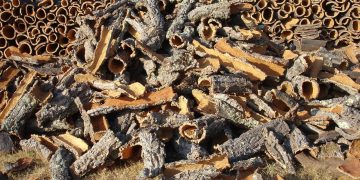



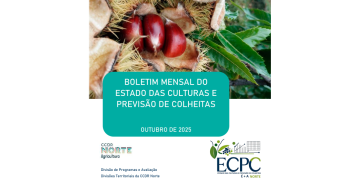
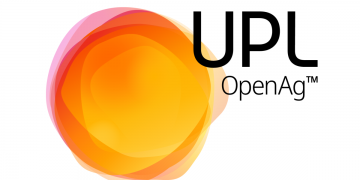

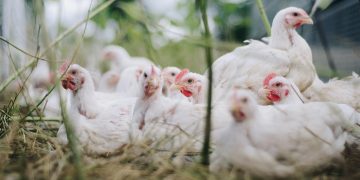











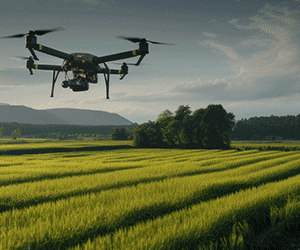


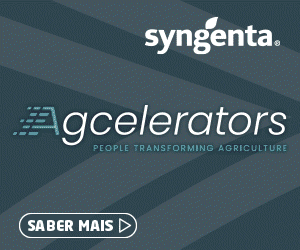
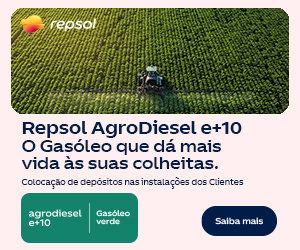
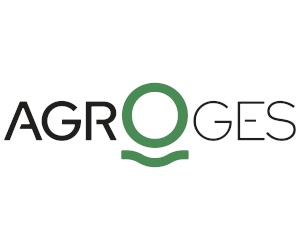





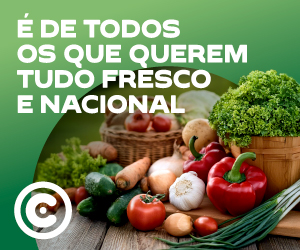


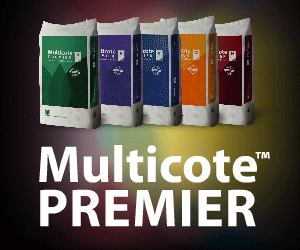

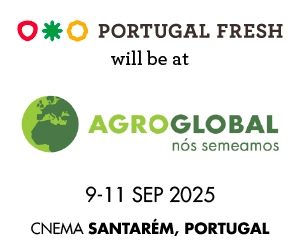



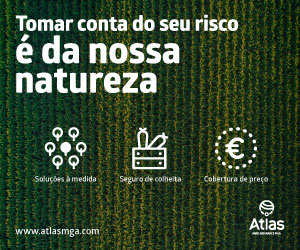






Discussão sobre este post